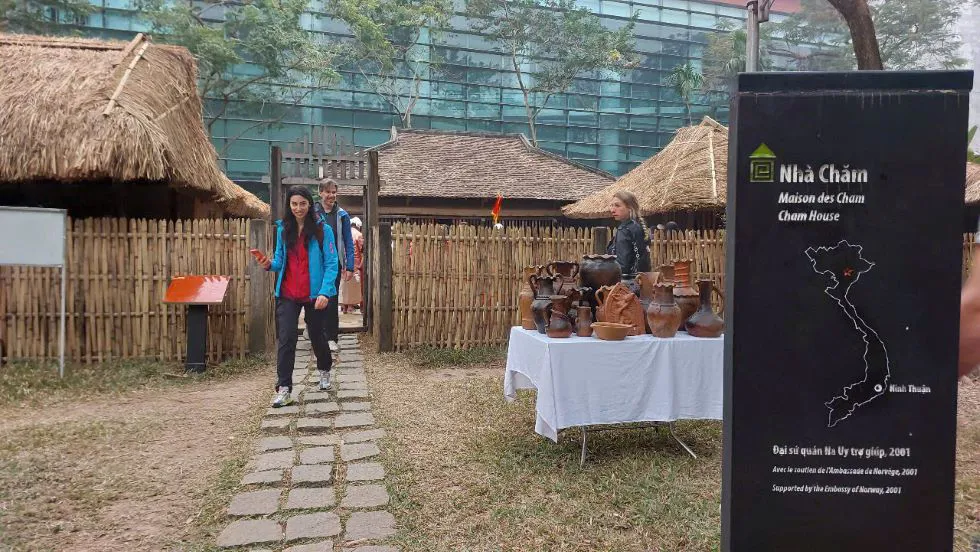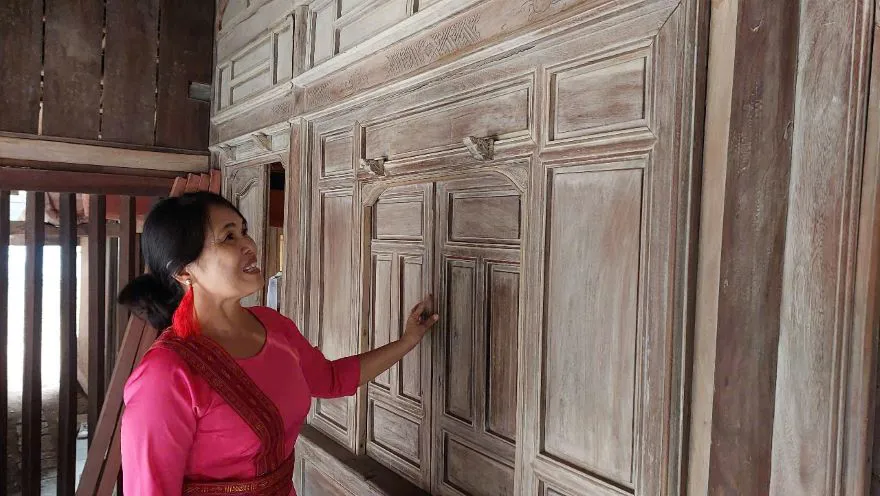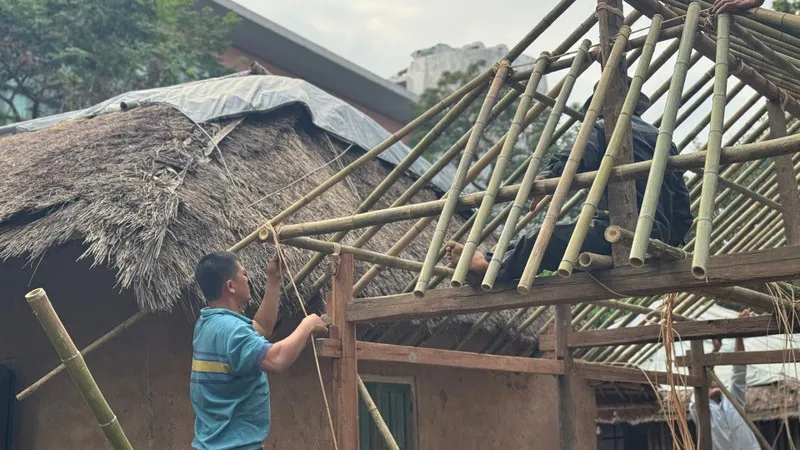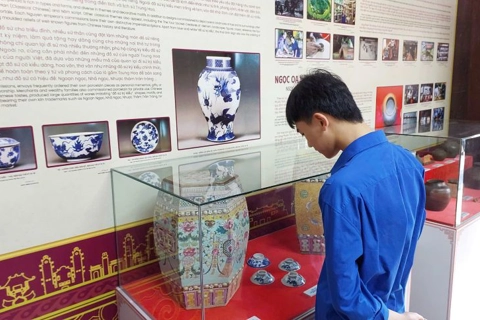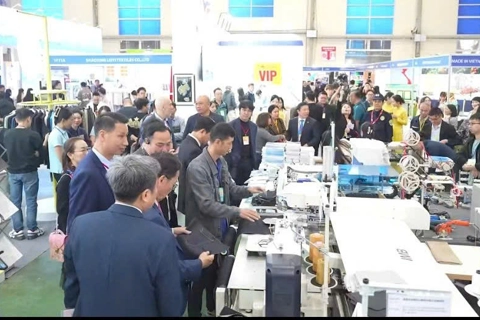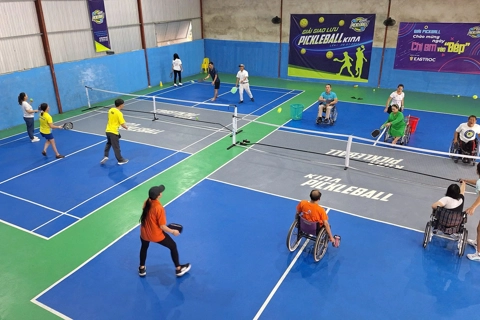Unique Cham architectural heritage in the heart of Hanoi
The Cham ethnic minority people cherish their houses as they preserve the cultural traditions of their families and clans. Today, preserving these homes is an urgent necessity.
Standing before the pillars of the Cham house at the Vietnam Museum of Ethnology in Hanoi, Dang Chi Quyet, 53, felt a deep sense of nostalgia. As the Director of the Bau Truc Pottery Village Community Tourism Area in Ninh Thuan, a coastal province, Quyet was moved as if he had stepped into his grandparents' traditional home once again.
For Quyet, the Cham house is not just a structure, but a symbol of the rich heritage of the Cham people, an invaluable legacy he had believed was nearly lost, even in his homeland. To his surprise, this emblem of tradition could be found not in the Cham heartland but in the very heart of Hanoi.
Unique architecture
The Cham group, led by Quyet, has played an active role in advising and supporting the Vietnam Museum of Ethnology in renovating the exhibit showcasing the Cham house. With a deep commitment to preserving national heritage, the group has worked passionately to ensure the integrity of this cultural treasure.
According to Quyet, no traditional Cham house exists in Bau Truc, the heartland of the Cham people, making the museum's exhibit all the more significant.
He explained the unique matriarchal system of the Cham community, where when a daughter marries, she remains in her parents' home. In this system, the husband must move in with his wife and live under the roof of the wife's family, a tradition that underscores the strength of maternal lineage in Cham society.
Cham house on display at the Vietnam Museum of Ethnology in Hanoi, with support from the Norwegian Embassy. Photo: Ngo Minh/The Hanoi Times |
In the large matriarchal Cham family, each couple has a separate house, so a traditional Cham dwelling place is a cluster of houses, depending on the number of married women in the family and the social class of the family.
Basically, the Cham compound has five houses. The first is the kitchen (thang ging), the ceremonial house (thang yo) for the newly married couple to dwell in. This is the most important house of the Cham people because all family ceremonies take place here.
Next is the horizontal house (thang lam) where the parents and unmarried siblings live. After the horizontal house is the side house (thang mu yau). This is the house where the eldest sister and her husband will live when the second younger sister marries, leaving the traditional house for the younger sister and her husband.
Finally, there is the High House (thang tong), which is the house for the elderly and people with high positions. For the noble class, there are two more houses for use as barns for production tools and mortars.
Su Van Ngoc, a researcher of Cham ethnic culture, once compared the five main rooms in a Cham house to the five fingers on a hand or to the five elements of nature (metal, wood, water, fire, earth). If one of these five elements is missing, everything in this world will not exist, and if one of the five rooms is missing, a Cham house will not be complete.
Preserving the tradition
Speaking to The Hanoi Times, Chau Thi Tinh, 56, said the materials used to build traditional Cham houses are mostly wood. The roof is thatched. Everything is done very elaborately and meticulously, from driving the poles to choosing the fences to mark the house area.
| Chau Thi Tinh is moved to see the traditional Cham house in Hanoi. Photo: Ngo Minh/The Hanoi Times |
According to Tinh, the dwelling of the Cham people has changed. Most Cham people now build houses according to their economic conditions, simpler with brick houses and corrugated iron roofs. In Ninh Thuan Province, there are only a few families who have kept two or three small traditional houses.
The Vietnam Museum of Ethnology currently houses several reconstructed Cham houses, offering visitors a chance to explore and appreciate the unique cultural heritage of the Cham people. These houses, all originally from Ninh Thuan, serve as a vital resource for learning about the distinct traditions and architectural styles of the Cham community, helping to safeguard this invaluable cultural legacy for future generations.
According to Bui Ngoc Quang, Deputy Director in charge of the Vietnam Museum of Ethnology, in order to complete the repair of the traditional Cham house in one month, the museum had to prepare everything from the beginning of the year.
One of the complicated issues is ordering quality cogon grass from the Vietnam-Laos border area, drying it, and transporting it to the construction site.
| Restoration of the Cham House at the Vietnam Museum of Ethnology. Photo courtesy of the museum |
Even more amazing is the fact that the roofing method is a traditional one that only skilled Cham craftsmen can perform, from weaving the layers of thatch to tying the joints of the roof structure to make it even and attractive.
"Restoring a traditional house of an ethnic group must be done by the members of that ethnic group themselves so that the best technique can be used and the spirit and soul of the house can be infused into it," Quang said.
Vo Quang Trong, an ethnologist, said that it is necessary to preserve images and data of original artifacts, as well as techniques and knowledge of the ethnic group, to serve as a basis for research and application in restoration and conservation work.
Trong said that preserving cultural heritage is not only about preserving traditional values, but also a creative process that requires the cooperation of relevant parties so that the flow of Vietnamese culture will always be in motion.

